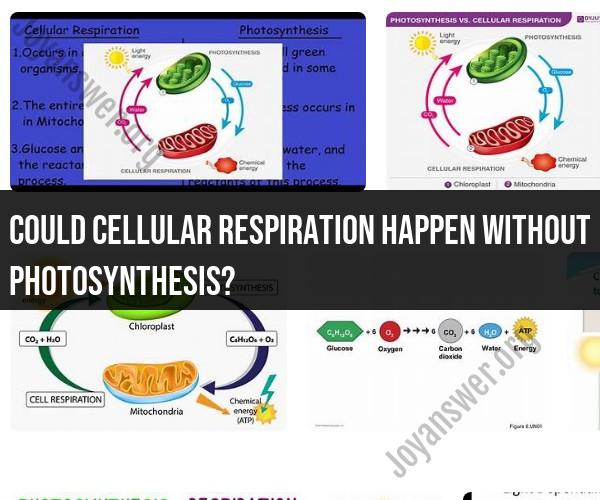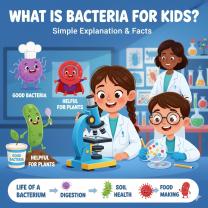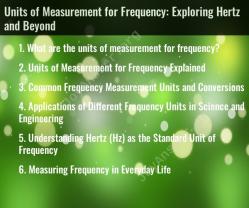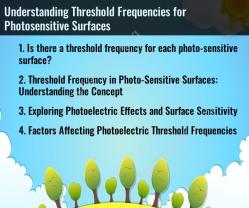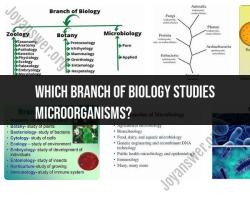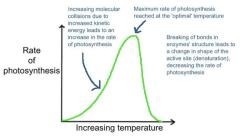Could cellular respiration happen without photosynthesis?
Cellular respiration can occur without photosynthesis, and this is a common occurrence in heterotrophic organisms. Heterotrophic organisms are those that cannot produce their own food through photosynthesis and must obtain organic molecules, such as glucose, from their environment. They rely on cellular respiration to extract energy from these organic molecules to power their cellular processes.
Here are some conditions and examples of cellular respiration without photosynthesis:
Heterotrophic Organisms: Animals, fungi, and many bacteria are examples of heterotrophic organisms that do not have the capability to carry out photosynthesis. Instead, they obtain organic molecules, usually from other organisms, and break them down through cellular respiration to produce energy (ATP).
Anaerobic Respiration: In the absence of oxygen, some organisms can still carry out cellular respiration through a process called anaerobic respiration. This allows them to generate ATP without the need for oxygen. One common example is lactic acid fermentation in certain bacteria and in muscle cells during strenuous exercise.
Decomposers: Organisms like decomposers (e.g., bacteria and fungi) obtain energy by breaking down dead organic matter, such as fallen leaves and dead animals. They perform cellular respiration on these organic materials to extract energy for their own growth and metabolic processes.
Obligate Anaerobes: Some microorganisms, such as certain bacteria, are obligate anaerobes, meaning they cannot survive in the presence of oxygen. They rely solely on anaerobic respiration to generate ATP.
In summary, cellular respiration can and does occur in a variety of organisms that do not have the capability to carry out photosynthesis. They obtain the necessary organic molecules from their environment and break them down through cellular respiration to produce energy, regardless of whether oxygen is present. However, photosynthesis is limited to autotrophic organisms (like plants and some bacteria) that can capture and convert solar energy into organic molecules, making them self-sustaining in terms of energy production.
Could Cellular Respiration Occur Without Photosynthesis?
No, cellular respiration cannot occur without photosynthesis.
Photosynthesis produces the oxygen that is used by cells for cellular respiration. Cellular respiration is the process by which cells break down glucose and other nutrients to produce energy in the form of ATP. ATP is the energy currency of the cell and is used to power all cellular processes.
Without oxygen, cells cannot produce ATP through cellular respiration. This means that they would not have the energy to carry out essential life processes, such as growth, development, and reproduction.
The Interdependence of Photosynthesis and Cellular Respiration
Photosynthesis and cellular respiration are interdependent processes. Photosynthesis produces the oxygen that is used by cells for cellular respiration, and cellular respiration produces the carbon dioxide that is used by plants for photosynthesis.
This cyclical relationship allows for the continuous transfer of energy and matter through living systems.
Scenarios Where Cellular Respiration Functions Independently
Cellular respiration can function independently in anaerobic organisms, such as bacteria and yeast. Anaerobic organisms do not need oxygen to produce energy.
Anaerobic respiration is a process that produces energy without the use of oxygen. It is less efficient than aerobic respiration, but it allows organisms to survive in environments where oxygen is not available.
Evolutionary Significance of Photosynthesis and Respiration
Photosynthesis and respiration are two of the most important evolutionary innovations on Earth. Photosynthesis allowed plants to colonize the land and produce the oxygen that is essential for life. Cellular respiration allowed animals to evolve and become more complex.
Without photosynthesis, there would be no oxygen in the atmosphere and life on Earth would not be possible. Without cellular respiration, animals would not be able to produce the energy they need to survive.
The Role of Anaerobic Respiration in the Absence of Photosynthesis
Anaerobic respiration is a process that produces energy without the use of oxygen. It is used by anaerobic organisms, such as bacteria and yeast, to produce energy in the absence of photosynthesis.
Anaerobic respiration is also used by human cells in certain situations, such as when there is not enough oxygen in the blood or when muscles are working very hard.
Anaerobic respiration is less efficient than aerobic respiration, but it is essential for survival in the absence of oxygen.
Conclusion
Cellular respiration and photosynthesis are two essential processes that are interdependent and interrelated. Cellular respiration cannot occur without photosynthesis, but there are scenarios where cellular respiration can function independently, such as in anaerobic organisms.
Photosynthesis and respiration play a vital role in the evolution and survival of life on Earth.
